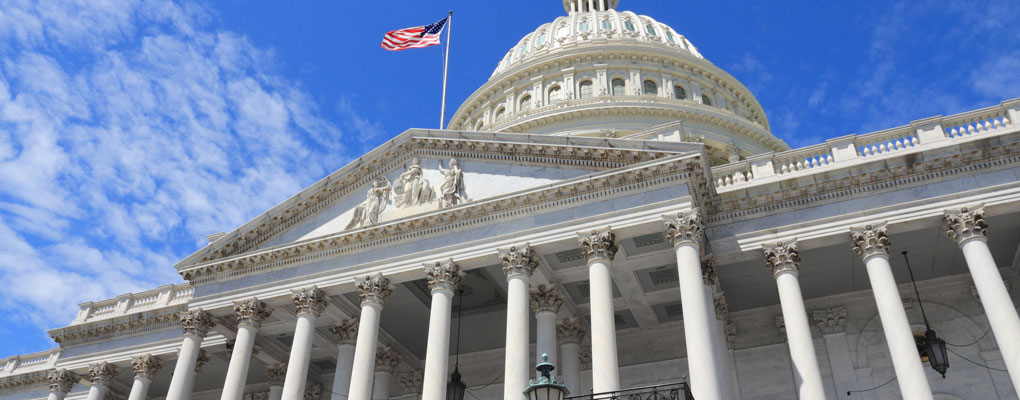Just Breaking: A Preliminary Report for Employers on the Coronavirus House Bill
March 15, 2020 – Analysis
In the early hours of Saturday, March 14, 2020, the House of Representatives passed the Families First Coronavirus Response Act, which is designed to expand relief in response to the coronavirus disease (COVID-19) outbreak through access to free testing, enhancing food assistance, increasing Medicaid funding and providing paid sick leave and unemployment benefits to workers. The Families First Coronavirus Response Act will now be considered by the Senate, which is expected to pass a version of it that will be signed into law within a week.
There is no similar requirement under either the expanded Family Medical Leave Act (FMLA) or the Emergency Sick Leave Act (ESLA) for employers of more than 500 employees. There is also no specific relief from the provisions for limited liability companies or subsidiary companies that may have fewer than 500 employees but are part of a multi-state or multi-national company whose overall employee count far exceeds 500 employees.
Employers will be looking for implementing guidance from the Department of Labor and the Internal Revenue Service, which may include specific instruction on whether related entities can aggregate employees to reach the 500-employee threshold
Emergency Paid Sick Leave
If enacted, the Families First Coronavirus Response Act would be the first federal law requiring private employers to provide paid sick leave to employees. However, not all private employers are covered: it only applies to private employers with fewer than 500 employees, although it applies to public agencies with at least one employee. Covered employers must give emergency paid sick time to any employee, regardless of the length of employment, for a qualifying emergency related to the coronavirus. Full-time employees would receive 80 hours of emergency paid sick leave and part-time employees would receive a proportionately similar amount, based on the average number of hours they work in a two-week period. The leave would not carry over from one year to the next. This emergency sick leave is in addition to any other existing paid leave that a covered employer provided prior to the passage of the law: after the law is passed, the employer may not change its existing paid leave to avoid paying the additional emergency leave. The bill also prohibits the employer from requiring an employee to use existing paid leave prior to using the new emergency sick leave and creates civil penalties for taking adverse action/retaliating against an employee who uses emergency sick leave pay or complains about a violation.
To utilize emergency sick leave pay, the employee must be: (a) under self-quarantine upon being diagnosed with coronavirus or complying with a recommendation or order by a public health official or healthcare provider to be physically absent from the job site because of exposure to or symptoms of coronavirus; (b) seeking a diagnosis or medical care after experiencing symptoms of coronavirus or (c) providing care to a family member who is self-isolating because of exposure to or symptoms of coronavirus or caring for a child whose school or child care provider is closed or otherwise unavailable due to the coronavirus outbreak. The bill prohibits the employer from requiring the employee to search for/find a replacement during the time the employee is using paid sick leave.
New Category of FMLA for Public Health Emergency
If signed into law, the Families First Coronavirus Response Act contains a provision that expands the Family and Medical Leave Act of 1993 (FMLA) to allow coverage for a new category: leave for a, “qualifying need related to a public health emergency,” with respect to a coronavirus outbreak. This leave would only be available during the window of time beginning 15 days after the bill is enacted and ending on December 31, 2020.
Unlike other categories of leave under FMLA that generally apply to employers with 50 or more employees, it applies to private employers with fewer than 500 employees, with exemptions for employers that are healthcare providers or emergency responders, and public agencies. Exemptions may also be sought by employers with less than 50 employees whose economic viability would be jeopardized by complying with the new category of leave, under criteria that would be determined by the Secretary of Labor.
A “qualifying need related to a public health emergency” means leave for any of the following reasons: (1) to comply with an order or recommendation of a public health official or a healthcare provider that the employee’s physical presence on the job would jeopardize the health of others, either because of the employee’s exposure to the coronavirus or because the employee is exhibiting symptoms of it, and the employee is unable to perform the functions of his job and comply with the order/recommendation; (2) to care for a family member of an eligible employee if a public official or a healthcare provider made a determination that the presence of the family member in the community would jeopardize the health of others in the community, either because of the exposure of the family member to coronavirus or the family member’s own symptoms of the coronavirus; (3) to care for the employee’s son or daughter under age 18 whose school/place of care is closed or caregiver is unavailable due to public health emergency. The definition of family member has been expanded for this category of leave to include more individuals than the existing definition of family member that applies to other categories.
The first 14 days of FMLA leave for a public health emergency are unpaid, unless an employee voluntarily elects to utilize existing accrued paid vacation leave, personal leave or medical or sick leave to cover the unpaid leave; the bill specifically prohibits an employer from requiring an employee to use existing paid leave during this time period. However, emergency paid sick leave created elsewhere in the bill would apply to this initial 14-day period.
Significantly – and unlike any other type of FMLA leave – the remaining period of qualifying leave for a public health emergency is paid, up to the full 12 weeks of leave, at a rate of pay that is, “at least two-thirds of the regular rate,” the employee would have earned under a normal work schedule.
The bill contemplates that the employer will return the employee to the same position at the conclusion of the leave for a public health emergency as with other types of FMLA leave. However, if an employer who is unable to immediately reinstate the employee to the same or equivalent position because no such positions exist, the employer must make reasonable efforts to contact and reinstate the employee during the year following the conclusion of the leave period.
Employer Tax Credits
The Families First Coronavirus Response Act provides tax credits for employers to assist with covering wages paid to employees who take time off under the sick or family leave programs.
Sick Leave Program (Payroll Tax Credit) – Subject to certain limitations, employers would be eligible for a refundable tax credit to be applied against the employer’s payroll tax liability equal to wages of up to $511 per day paid to an employee making use of the sick leave program to care for the himself/herself, or wages of up to $200 per day paid to an employee making use of the sick leave program to care for a child or family member. The aggregate amount of days, per employee, eligible for this tax credit is 10 days in total.
Emergency Family Leave Program (Payroll Tax Credit) – Employers would also be eligible for a refundable tax credit to be applied against the employer’s payroll tax liability equal to wages, per employee, of up to $200 per day (or a total of $10,000) paid to an employee making use of the family leave program, again subject to certain limitations.
With respect to these family leave payroll tax credits, an employer who is otherwise allowed a credit for family and medical leave under Internal Revenue Code 45S cannot get a double benefit. Note that employer may elect out, on a quarter by quarter basis. Presumably, this election would be made to take other tax benefits.
Self-Employment Tax Credits
Self-Employment Sick Leave Tax Credit - A similar refundable tax credit would also be available for certain self-employed individuals under the Families First Coronavirus Response Act, to be applied against such individuals’ self-employment tax. With certain restrictions on the number of days an individual may claim the credit for, the self-employment sick leave tax credit would cover 100% of a self-employed individual’s “qualified sick leave equivalent” (if utilizing the sick leave program to care for the individual), or 67% of the qualified sick leave equivalent (if utilizing the sick leave program to care for a child or family member). The “qualified sick leave equivalent” would be the lesser of (a) the average daily self-employment income for the individual for the taxable year, per day, or (b) (i) $511 per day paid to an employee while caring for the employee, or (ii) $200 per day while caring for a child or family member. The taxpayer can take advantage of the self-employment tax credit for an aggregate of 10 days.
Self-Employment Emergency Family Leave Tax Credit - Self-employed individuals could also be eligible for a family leave tax credit of the lesser of (a) the average daily self-employment income for the individual for the taxable year, per day or (b) $200. This family leave tax credit would be available for up to 50 days.
Of note, the tax credit will be available for employers on wages paid through December 31, 2020, and state and local government employers are not eligible for the tax credits mentioned.
The U.S. Treasury Department is expected to issue regulations to help guide employers with how to utilize the tax credits following the enactment of the Families First Coronavirus Response Act.
If you have questions regarding the Families First Coronavirus Response Act, or you require assistance with any related matters, contact an attorney in our Tax, Benefits, and Wealth Planning Group.

